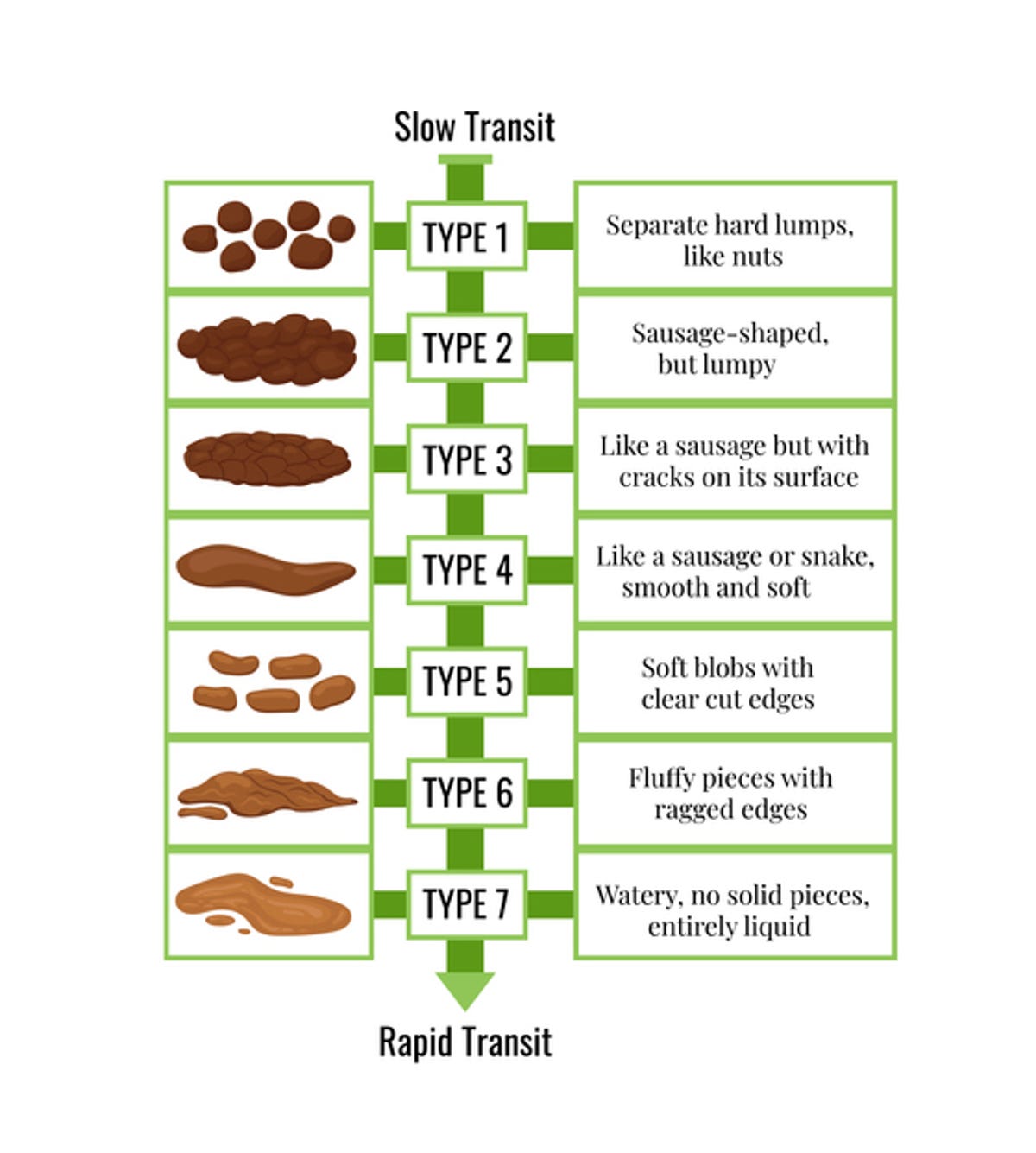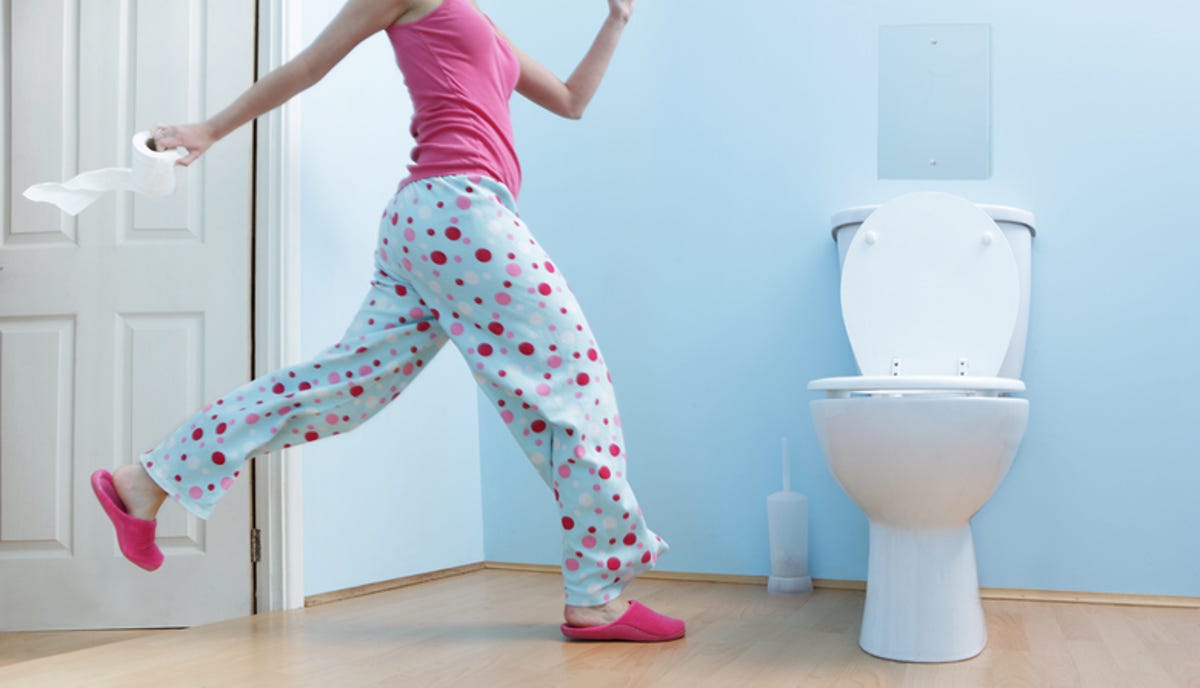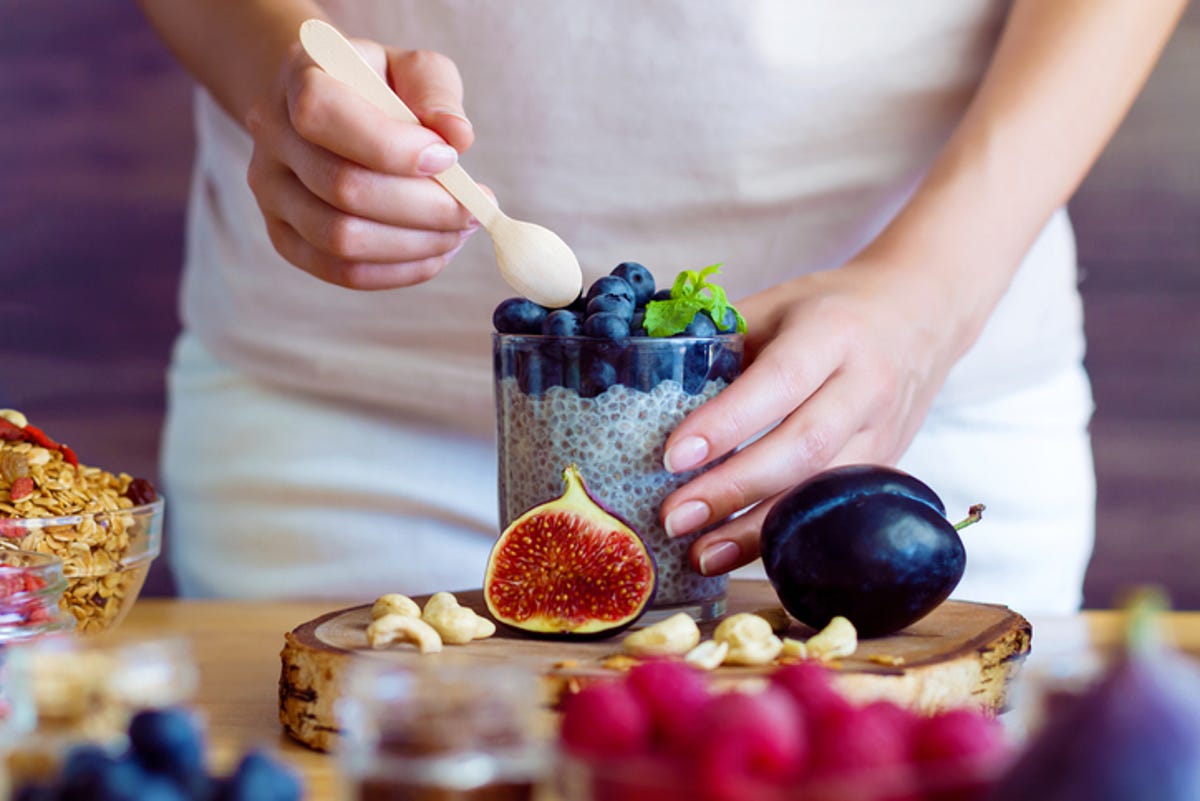
Poop is the thing no one wants to talk about, but everyone does. I get it; poop is gross. But it’s one of the biggest indicators of your health. Paying attention to your bowel movements can help track your health and spot food intolerances you may have missed.
Variation in size, shape and smell is normal. Your poop will change depending on what you’ve eaten and how much water you’ve drank. You’ll experience different types over time; it only becomes a problem when undesirable colors and shapes last longer than a few days. Here’s what the shape and color of your poop are trying to tell you about your health.
What is the Bristol Stool Form Scale?
Before we get started, let’s level on the Bristol Stool Form Scale, a medical tool that helps categorize stool into seven buckets, which allows doctors to assess the duration of time that the stool was in the bowel. It’s the scale you should think about your bowel movements by.

IRYNA NASKOVA/Getty Images
Everybody’s poop will vary slightly. However, the ideal stool is smooth, easy to pass and brown. Healthy poops shouldn’t take long to pass. So if you’re in the bathroom for longer than fifteen minutes, you’re constipated. The average person will poop somewhere between every other day or up to three times each day.
Contact your doctor immediately if you’ve noticed any significant changes in bowel movements, blood in your stool or abdominal pain.
What the shape of your stool is trying to tell you
Hard lumps

Types one and two on the BSFS are typically hard to pass, which indicates constipation. This occurs when the stool slowly passes through the digestive system, resulting in a long time in your bowel. Constipation can be caused by diet, but it also can be stress related. The stress hormones the body releases influence our bodily processes, including bowel movements.
If you often have this type of bowel movement, adding more fiber to your diet can make things easier to move along. According to Mayo Clinic, the recommended fiber intake for women is 21-25 grams and 30-38 grams per day for men. The vast majority of people aren’t getting enough fiber from their diet. You can try fiber supplements to help things along.
It’s also important to ensure you’re drinking enough water to loosen up your stool and let it pass without strain. You also can add more magnesium-rich foods and probiotics to your diet to reduce constipation.
Soft blobs
Stool characterized as soft blobs (type five) indicates insufficient soluble fiber in your diet. Focus on adding fiber-rich foods like beans, avocados and whole grains. Or, add a fiber supplement to your diet that will regulate digestion and help get your bowel movements back on track.
However, taking too much fiber can cause constipation. Generally, that happens when taking an excess of 70 grams each day. Still, monitoring your bowel movements when taking fiber supplements is important to ensure you’re helping your digestion as intended.
Diarrhea
Types six and seven on the BSFS are forms of diarrhea. This is not the ideal form of stool because it is difficult for the body to get nutrients from food if it passes through the body too quickly.
We’ve all had diarrhea and will have it in the future. An acute case of diarrhea can be triggered by sickness or food poisoning. Long-term diarrhea that lasts several weeks can point to food intolerances or underlying digestive disorders. Make an appointment with your doctor if you have frequent diarrhea to address if you have chronic inflammation, irritable bowel syndrome or food sensitivities.
Read more: Tips for Traveling With IBS

Peter Cade/Getty Images
What the color of your stool says about your diet
Brown is the normal poop color, with slight variations in shade. However, stool can vary in color based on your diet and the medications you’re taking.
White or pale
Your stool shouldn’t be chalky or white. Sometimes it happens as a side effect of medications you take. However, it can point to more serious health conditions. White or pale stool may indicate your body isn’t making enough bile, a bile duct is blocked, or you may have an infection or inflammation in the liver, pancreas or gallbladder.
Red
Red stool can be alarming but can happen because of mundane sources like your diet. If you eat a lot of cranberries or beets, you may notice your stool has a red tint. It also can happen because you’ve consumed a lot of red food dye or red-colored medication. Red stool can present in two ways: a red coating or spots.
More seriously, red stool can point to bleeding in the large intestine or rectum, which may be symptoms of disorders like diverticulosis, Crohn’s disease or conditions like colon cancer. If you haven’t eaten anything that would turn your poop red, contact your doctor immediately for a visit.
Green
Green poop is okay sometimes! There are a few reasons green stool can occur. First, you eat a ton of leafy green vegetables — that’s the best reason. It also may be because you ate a lot of things with green food dye. Finally, it may point to the fact that your food passes too quickly through your body.
Yellow
For most people, yellowish, oily stool tells you that your diet is too high in fat. Alternatively, it is an indicator of malabsorption, or your body is not extracting nutrients from your food. Celiac disease is a malabsorption disease often the culprit behind yellow stool.
Black
Black poop is another color no one wants to see. However, your stool can be black because of your medications. For example, iron supplements or over-the-counter medicine like Pepto Bismol can create a black color.
If you haven’t had any of those things, black stool may also be a sign of bleeding in the upper gastrointestinal tract. Any amount of internal bleeding is something to get checked out. If you notice that your stool is extremely dark or black and haven’t taken any supplements, make an appointment with your primary care doctor to find the source.
Other characteristics of stool
Change in smell
Let’s be clear: It’s never going to smell good. Though typically, you know what to expect from your body regarding smell. If you suddenly are experiencing bowel movements that are particularly smelly or unique to your body, it may be pointing to something going on.
It can point to Crohn’s disease, celiac disease or ulcerative colitis. Alternatively, it may mean you have inflammation of the pancreas or intestine.
Floating
Sometimes, poop floats because it’s less dense than other bowel movements. This can happen because of a high-fiber diet or a large amount of gas. It also can mean your body isn’t absorbing nutrients as it should. Floating stool now and then isn’t an immediate sign of worry. Consistent floating stool is worth mentioning to your doctor.

monstArrr_/Getty Images
Tips to keep your digestion healthy
We all want healthy digestion. After all, our intestines are where our body absorbs the nutrients we need from our food. Here are a few tips you can implement into your diet to keep your gut healthy.
- Drink water: The most common reason people have type one or two stools on the BSFS is that they aren’t drinking enough water. Water helps loosen up the stool and move it along. If you’re prone to constipation, make sure you’re drinking plenty of water.
- Eat colon-healthy foods: A well-balanced diet does more than just give your body the nutrients it needs; it helps you poop. Ensure you’re eating plenty of fruits, veggies, fiber, and magnesium.
- Exercise regularly: Integrating exercise into your daily routine is one of the best things you can do to stay regular. It decreases the time it takes for food to move through the intestine. Exercise keeps everything moving on time.
The TL;DR version of this is: everybody poops, and it’s normal for there to be variation in bowel movements. The best form of stool is long, smooth and brown. Lasting changes in your poop are worth meeting with your doctor about to rule out medical conditions.
The information contained in this article is for educational and informational purposes only and is not intended as health or medical advice. Always consult a physician or other qualified health provider regarding any questions you may have about a medical condition or health objectives.
